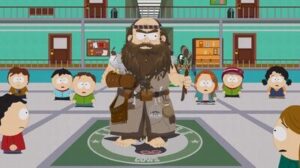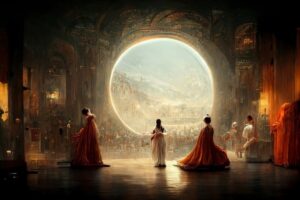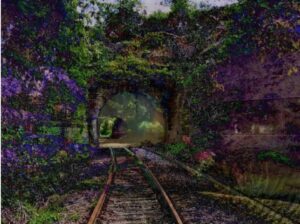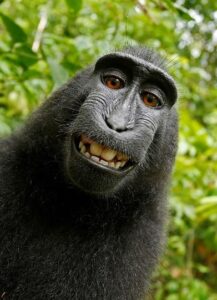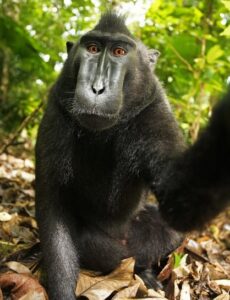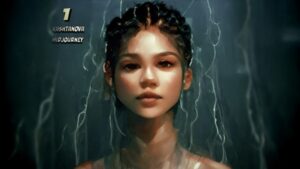Copyrightability of AI-Generated Works
In recent months, we have been saturated with media coverage involving artificial intelligence (“AI”). Almost daily there are articles about AI platforms including DALL-E, Midjourney, Stable Diffusion and ChatGPT, alternatively heralding AI as a great resource or a fearsome scourge to humanity. Even the long-running animated television show South Park devoted an entire episode (Season 26, Episode 4: Deep Learning) to the use of ChatGPT by students and teachers.
Furthermore, newspapers, magazines, and internet blogs as well as TV and radio outlets have actively covered AI-related events such as digital artist Jason Allen’s winning first prize at the 2022 Colorado State Fair for an image entitled Théâtre D’opéra Spatial created using the AI platform Midjourney. Many felt that Allen did not merit the prize, since he dictated instructions to the AI system, but did not create the image himself. Allen argued otherwise, stating that he was an author in that he developed a special written prompt to generate the image, modified the image using Photoshop, and then used Gigapixel, another AI program, to improve the image.
In all of the discussions and articles about AI, there are far more questions raised than answers provided. Some of the questions have great importance, including: Are AI-generated works entitled to copyright protection?
This is a question to which the U.S. Copyright Office (the “Office”) is actively considering answers. On March 16th, the Office issued a policy statement (the “Policy”) in the Federal Register,1 in which it explains that the Policy is offered because “public guidance is needed” in light of the increasing use of “sophisticated AI technologies capable of producing expressive material.”
The Policy references the Office’s refusal to register computer scientist Stephen Thaler’s two-dimensional artwork entitled A Recent Entrance to Paradise.
Thaler’s application for registration stated that an AI system that he developed, i.e., “Creativity Machine,” was the “author” of the image and Thaler was the “claimant.” But the Office has taken the position that copyright protection is available only to human authors and rejected Thaler’s application stating that the work at issue “lacks the human authorship necessary to support a copyright claim.” Thaler filed an appeal to the Office Review Board, which confirmed the rejection because the work was made “without any creative contribution from a human actor.” Thaler then filed a lawsuit in the U.S. District Court for the District of Washington, DC (Thaler v. Perlmutter, Case No.: 1:22-cv-01564) against Register of Copyrights Shira Perlmutter.
In his complaint and in his motion for summary judgment filed earlier this month, Thaler argues that the Copyright Act does not include any requirement of human authorship. It is true that Section 101: Definitions of the Copyright Act does not define the term “author,” nor is that term defined elsewhere in the statute.
The Office, however, doubled down on its commitment to the requirement of human authorship in the Policy, stating that this requirement is “well-established” and citing both the U.S. Constitution and the Copyright Act as its authority as well as referencing an 1884 case involving a photograph of Oscar Wilde.2 In its opinion in that case, the court referred to authors as “humans” and “persons” and the copyright as “the exclusive right of a man to the production of his own genius or intellect.”3
But Thaler argued that both the Copyright Act and the Office have recognized non-human authorship in the approach to works made for hire, which are granted terms of protection unrelated to any human life, and by allowing companies to be the “constructive author” of works. This approach is consistent with the U.S. Supreme Court’s 2010 decision in Citizens United, which held that a corporation should be treated as an individual for purposes of political campaign donations and with regard to free speech more generally under the First Amendment.4
Further, Thaler asserts that the U.S. Constitution, the basis for both patent and copyright protection, focuses on promoting progress and the dissemination of works to the public.
Article 1, Section 8, Clause 8
To promote the Progress of Science and useful Arts, by securing for limited Times to Authors and Inventors the exclusive Right to their respective Writings and Discoveries;
But this clause is more often interpreted as a kind of contract whereby authors and inventors are granted certain rights, for a period of time, as an incentive to create and invent, and in exchange, the public benefits from those works.
Moreover, the Office’s position on human authorship is consistent with its position stated in an earlier case, i.e., Naruto v. Slater, known as the “monkey selfie” case.5 Photographer David Slater was photographing in Indonesia when a Celebes crested macaques called Naruto found Slater’s camera on a tripod and took hundreds of self-portraits.
Slater argued that he was the owner of the copyrights in the images because he set everything up and the ape only had to click the camera. The Office issued an opinion stating that “only works created by a human can be copyrighted under United States law, which excludes photographs and artwork created by animals or by machines without human intervention.” This language was added to the Compendium of U.S. Copyright Office Practices when the Third Edition was first released in 2014.6
The Policy makes it clear that “applicants have a duty to disclose the inclusion of AI-generated content in a work submitted for registration and to provide a brief explanation of the human author’s contributions to the work” and applicants “who use AI technology in creating a work may claim copyright protection in their own contributions to the work.”
This is consistent with a registration issued earlier this month, when the Office granted limited copyright protection for a graphic novel entitled Zarya of the Dawn. Images created using AI platform Midjourney were specifically excluded from protection, limiting protection to the text and arrangement of the images. The author, Kris Kastanova, has characterized this as a “partial victory” for AI, but since those portions of the work that are the result of AI are excluded from protection, his statement does not seem accurate.
On March 16th, the Office announced that it is launching “a new initiative to examine the copyright law and policy issues raised by artificial intelligence (AI), including the scope of copyright in works generated using AI tools and the use of copyrighted material in AI training.”7 The announcement stated that the Office will be holding public roundtables “with artists, creative industries, AI developers and researchers, and lawyers working on these issues” and that the Office plans to publish a notice of inquiry soliciting comments on copyright issues involving AI.
While the Office seems confident in its current approach, the Policy ends with the statement that: “The Office continues to monitor new factual and legal developments involving AI and copyright and may issue additional guidance in the future related to registration or the other copyright issues implicated by this technology.” So it will be important to monitor the Office’s activities as well as the court’s decision in the Thaler case. It is possible that the Office could alter its approach going forward and/or that the court will disagree with the Office. In the future, might AI be seen as analogous to a camera and might certain AI-generated work be copyrightable? Photographs created using cameras (including cameras with certain automatic settings) have been deemed eligible for copyright protection. Perhaps the instructions and prompts that are given to AI systems will be interpreted as analogous to using a camera?
As more and more AI-generated works enter the marketplace, it might make sense to reconsider how they are treated and whether they deserve any protection. Clearly more information and analysis will be needed on the issue of copyrightability of AI-generated work.
Copyright Registration Guidance: Works Containing Material Generated by Artificial Intelligence. Vol. 88 Fed. Reg. 16190 (Mar. 16, 2023).
Burrow-Giles Lithographic Co. v. Sarony, 111 U.S. 53 (1884).
Id. at 58.
Citizens United v. Federal Election Commission, 558 U.S. 310 (2010).
Naruto v. Slater, 888 F.3d 418 (9th Cir. 2018).
Compendium of U.S. Copyright Office Practices § 306 (3d ed. 2021).
Copyright NewsNet 1004, Mar. 16, 2023.
